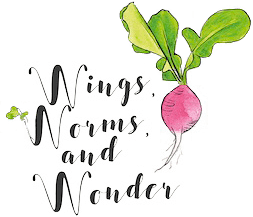Guided Sensory Observation
Observation. Sure it means to look carefully, to study something closely, often with only our eyes.
But I would say, it also means – slow down. The best observations, and thereby connections, happen when we stop the hustle spinning around (and within) us.
The skill of observation is a long term process of attuning, letting all our senses bring in information and giving our brains time to assimilate that information, time to build and connect patterns, and allowing time for a relationship to bloom.
Becoming an observer requires the ability to slow down more than anything else. The same is true for the process of making art. Drawing takes time because it requires observation.
Often people think they can’t draw, but it’s only because they don’t realize how long it actually takes! I can’t even tell you how many times people have asked me to draw or paint them something “real quick.” They just don’t realize how long the process of the finished products they see actually take to create.
So the next time you feel like you can’t do something, stop. Slow your body and mind in a way that works for you. Stop the spinning rush of the world. Then, allow space for real observation to happen and I think you will be surprised at the connections and the abilities that follow!
Try This:
- Go outside for a walk in some type of natural-ish area.
- Breathe deeply as you walk.
- As you walk, go through your senses. Focus on a single sense and take 3 deep breaths as you focus on each sense.
- After going through each sense while walking, start looking for a natural-ish place where you can be still.
- Now that you have found your place to sit still, breathe deeply and go through each sense again, but allowing a minimum of 5 breaths for each sense.
- This time, since you are sitting, when not using your sense of sight close your eyes. Remember to use your entire skin and body to bring in messages.
- Once you feel your body and mind slow down, open your eyes and choose something to observe closely.
- Look very closely from multiple angles. Notice all the little visual details and aspects of the item – the whispers of that form, if you will.
- If appropriate, employ other senses. Touch, smell, and listen to the item.
Now notice, how has your relationship with this item and space changed?
How did you change your experience as an observer by simply slowing down and allowing your brain to process the sensory information and patterns your body was bringing in?
In a day or 2, do this same observation exercise, but bring paper and pencil with you.
This time after you have been through the observation slow down exercises, then draw the item or scene from the space. Remember to stay slowed down. Drawing takes a while!
If you find yourself feeling apprehensive about drawing, return to the breathing and sensory observation exercises. Be gentle with yourself and trust the process. No judgements. You are documenting observations, not creating a piece for a museum. This is for you only. Process over product!!
Now, how has your relationship with the natural item, and with the visual expression of your observation of that item, changed again?
The key to boosting observation skills is simple, just slow down and the most unusual surprises and details will show themselves to you! When can you start building time for the process of observation into your routine?
Here is a guided sensory observation audio I recorded for you!
